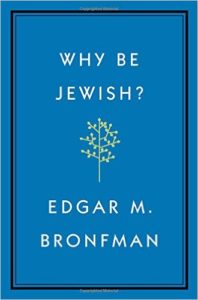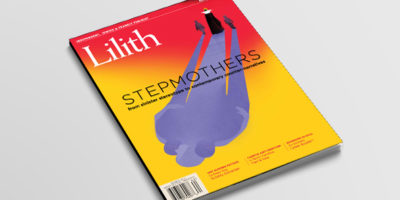Edgar Bronfman Had Great Teachers, Some of Them Women
 I had the good fortune to meet legendary philanthropist and global Jewish community leader Edgar Bronfman (1929–2013) several times, and on each occasion, I was struck by his hunger for questions and learning. As a recipient of and later faculty member on his eponymous Fellowship to Israel, I shared meals and meetings with Bronfman in which one might have expected him to demand only a report on the impact of his program. Instead, he jumped right into deep conversation and challenging questions.
I had the good fortune to meet legendary philanthropist and global Jewish community leader Edgar Bronfman (1929–2013) several times, and on each occasion, I was struck by his hunger for questions and learning. As a recipient of and later faculty member on his eponymous Fellowship to Israel, I shared meals and meetings with Bronfman in which one might have expected him to demand only a report on the impact of his program. Instead, he jumped right into deep conversation and challenging questions.
Bronfman’s commitment to questions as a key element of Jewish practice is at the heart of his latest and final book, Why Be Jewish? A Testament (Hachette, $26), published posthumously in March. He identifies the invitation to questioning as one of the most important aspects of Judaism and Jewish culture, but also demonstrates his own dedication to finding the answers that work for him.
The findings of an autodidact with access to great Jewish teachers and with the power to support learning among others, the book is a pastiche of the texts and insights Bronfman has gleaned from his far-ranging efforts to educate himself Jewishly. The structure of the book traces the annual holiday cycle and then, through the lens of Passover, focuses on the figure of Moses, clearly an inspiring leadership role model for Bronfman. Though the book’s commentary on the holidays and on the story of Moses summarizes general liberal insights, it offers an interesting glimpse into how a person who came to these practices and texts later in life has learned to make personal meaning from them. As a model of a self-taught Jew, Bronfman is a shining example.
Bronfman asserts that one of Moses’s central teachings is that transformation is possible. This, too, is one of Bronfman’s teachings, as he revisits the Jewish disaffection and ignorance of his earlier years and tells the story of his slow turn to Jewish learning and practice, honestly and openly sharing his own failings
and challenges.
Reflected in his story are two essential characteristics, both of which are unexpected and rare in a man of Bronfman’s stature and influence: the first is a great openness to learning from a wide variety of people, especially young people. This includes many women, from college student activist Hannah Rabinowitz to LGBT leader Idit Klein to former Member of Knesset Ruth Calderon to 19th century Jewish writer Emma Lazarus. The second is a deep confidence in the Jewish process — that if you bring people together, expose them to Jewish texts and teachers, you can cultivate something powerful. He clearly took very seriously the Mishnaic dictum to “acquire for yourself a teacher” — a teaching that is the inaugural text studied each summer on the Bronfman Youth Fellowship.
The final chapter describes Moses at Mt. Nebo, his death place, looking out over the Promised Land that he was not permitted to enter. Bronfman chooses to see this panoramic view as a blessing, not a punishment — Moses is given a vision of the entire Promised Land, and therefore a vision of his people’s future.
It might have been fitting for Bronfman to end his own book there, as he looks out over the future that he has helped to cultivate but will not see for himself. Instead, he chooses to end on a different theme — that of the belief that all Jews, past, present, and future, were present at the giving of the Torah at Mt. Sinai. That this great moment of revelation was accessible to all, not just to the priests or leaders, is a fundamental statement of Judaism’s democracy. That Bronfman chose to end his book on this note of equality and access speaks volumes about his own humility and vision of himself as a man of the people.
Judith Rosenbaum is the executive director of the Jewish Women’s Archive.



